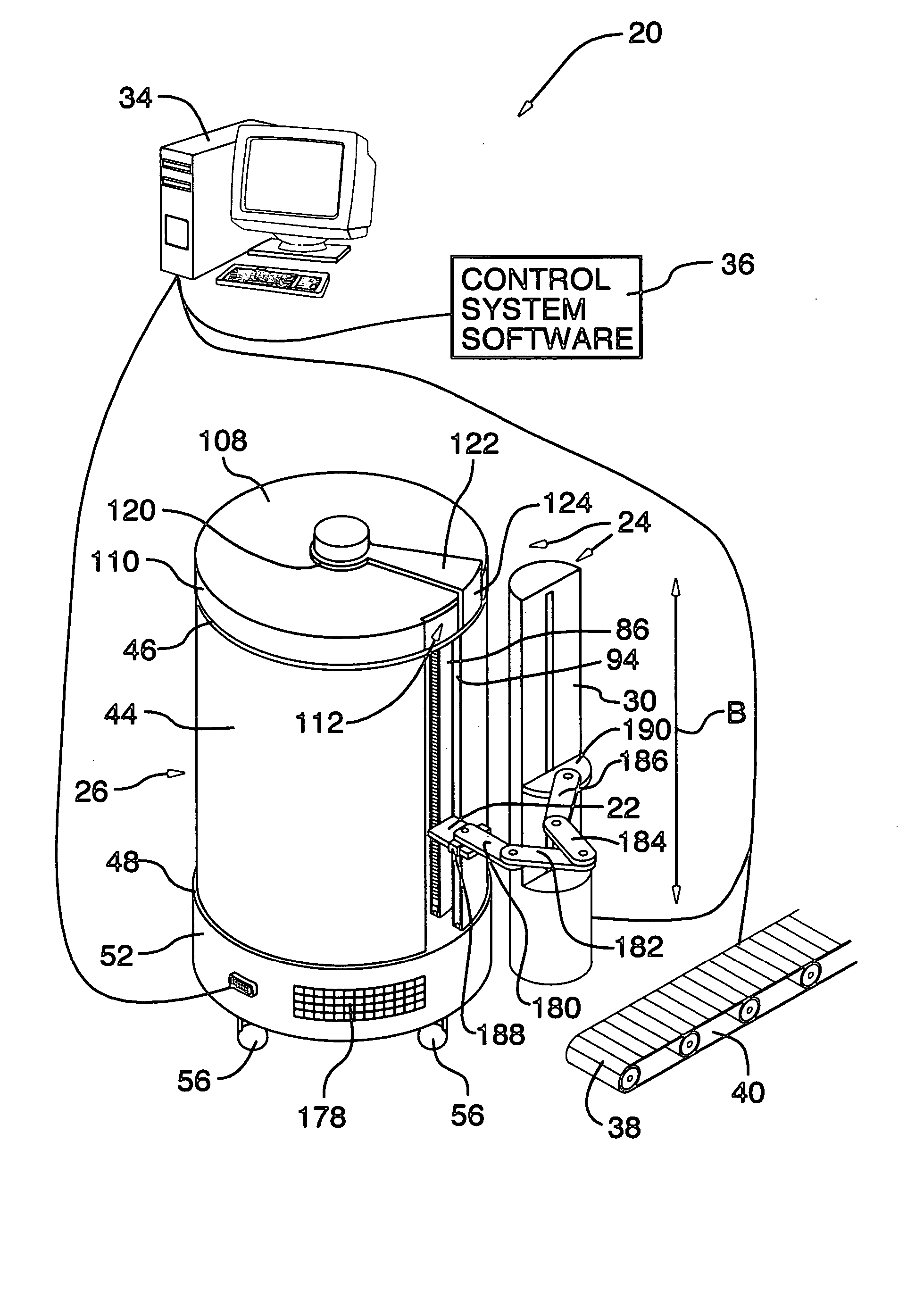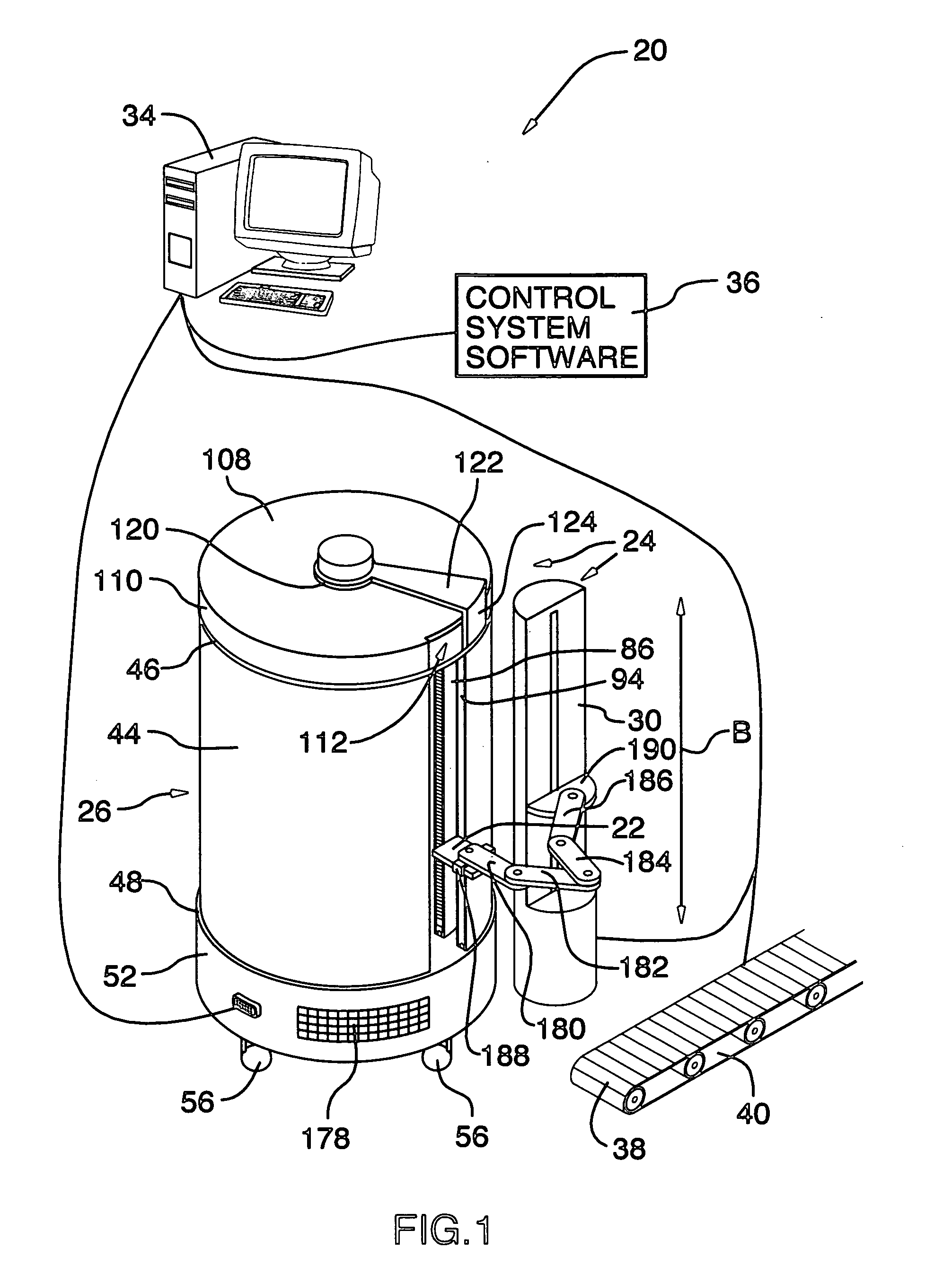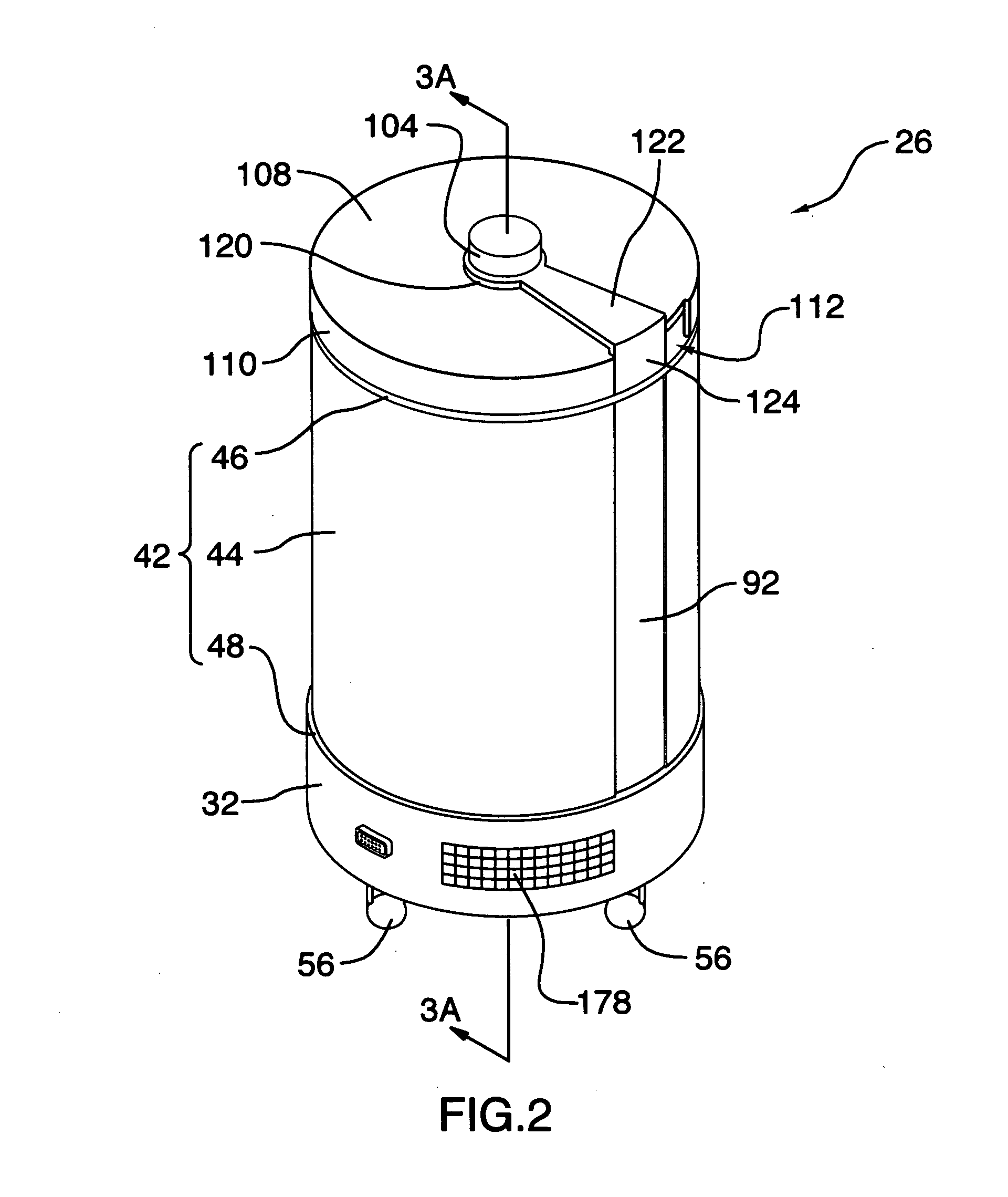Environmentally controllable storage system
a storage system and environment control technology, applied in the field of storage systems, can solve the problems of preventing laboratory personnel from doing higher-level tasks, heavy and complex work, and heavy and complex prior-art carousel storage devices
- Summary
- Abstract
- Description
- Claims
- Application Information
AI Technical Summary
Benefits of technology
Problems solved by technology
Method used
Image
Examples
Embodiment Construction
[0038] Referring to FIG. 1 of the drawings, there will be seen an automated laboratory analysis system 20 which is set up to conduct repetitive tests upon chemical or biological samples (not shown) contained in containers 22 stored in predetermined storage locations 28 (best seen in, for example FIGS. 3A through 3D)in a storage system 24 according to the invention. The containers are typically microplates 22 (that may take a number of known standardized configurations, including, without limitation, deep well microplates). Other types of labware of the same general configuration to the microplates 22 shown may be handled and stored in a manner analogous to that described hereinbelow with routine re-sizing of the necessary components of the invention, as will be readily apparent to those skilled in the art.
[0039] The storage system 24 illustrated in the embodiment of FIGS. 1 through 7D comprises a single storage module 26 and a single robotic means 30. This is for ease of illustrati...
PUM
 Login to View More
Login to View More Abstract
Description
Claims
Application Information
 Login to View More
Login to View More - R&D
- Intellectual Property
- Life Sciences
- Materials
- Tech Scout
- Unparalleled Data Quality
- Higher Quality Content
- 60% Fewer Hallucinations
Browse by: Latest US Patents, China's latest patents, Technical Efficacy Thesaurus, Application Domain, Technology Topic, Popular Technical Reports.
© 2025 PatSnap. All rights reserved.Legal|Privacy policy|Modern Slavery Act Transparency Statement|Sitemap|About US| Contact US: help@patsnap.com



